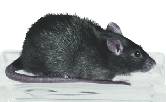
WEDNESDAY, June 5 (HealthDay News) — Using an immune-suppressing medication and adult stem cells from healthy donors, researchers say they were able to cure type 1 diabetes in mice.
“This is a whole new concept,” said the study’s senior author, Habib Zaghouani, a professor of microbiology and immunology, child health and neurology at the University of Missouri School of Medicine in Columbia, Mo.
In the midst of their laboratory research, something unanticipated occurred. The researchers expected that the adult stem cells would turn into functioning beta cells (cells that produce insulin). Instead, the stem cells turned into endothelial cells that generated the development of new blood vessels to supply existing beta cells with the nourishment they needed to regenerate and thrive.
“I believe that beta cells are important, but for curing this disease, we have to restore the [blood vessels],” Zaghouani said.
It’s much too early to know if this novel combination would work in humans. But the findings could stimulate new avenues of research, another expert says.
“This is a theme we’ve seen a few times recently. Beta cells are plastic and can respond and expand when the environment is right,” said Andrew Rakeman, a senior scientist in beta cell regeneration at the Juvenile Diabetes Research Foundation (JDRF). “But, there’s some work still to be done. How do we get from this biological mechanism to a more conventional therapy?”
Results of the study were published online May 28 in Diabetes.
The exact cause of type 1 diabetes, a chronic disease sometimes called juvenile diabetes, remains unclear. It’s thought to be an autoimmune disease in which the body’s immune system mistakenly attacks and damages insulin-producing beta cells (found in islet cells in the pancreas) to the point where they no longer produce insulin, or they produce very little insulin. Insulin is a hormone necessary to convert the carbohydrates from food into fuel for the body and brain.
Zaghouani said he thinks the beta cell’s blood vessels may just be collateral damage during the initial autoimmune attack.
To avoid dire health consequences, people with type 1 diabetes must take insulin injections multiple times a day or obtain continuous infusions through an insulin pump. It’s estimated that 3 million U.S. children and adults have the disease, which increased by almost one-quarter in Americans under age 20 between 2001 and 2009.
Zaghouani and his colleagues previously tested a drug called Ig-GAD2 that would destroy the immune system cells responsible for destroying the beta cells. The drug worked well to prevent type 1 diabetes, but it didn’t work as a therapy when type 1 diabetes was more advanced.
“This made us question whether there were enough beta cells left when the disease is advanced,” said Zaghouani. After conducting bone marrow transplants, the researchers came to a surprising conclusion. “The bone marrow cells did go to the pancreas, but they didn’t become beta cells; they became endothelial cells,” he said. “So, the problem wasn’t a lack of beta cells or their precursor, the problem was that the blood vessels that irrigate the islet cells are damaged. That was a very novel and intriguing finding.”
The immune-suppressing drug was given for 10 weeks, and bone marrow transplants were given intravenously on weeks 2, 3 and 4 after the diabetes diagnosis.
The mice were cured throughout the study follow-up of 120 days, which is about the lifespan of a mouse, Zaghouani said.
Zaghouani said he believes the immune attack may not be ongoing, and he hopes to give the mice bone marrow transplants without the immune-suppressing drug to see if that is sufficient to cure their disease.
Rakeman explained that while current thinking is that “a cure would need to address the immune system attack and the regrowth of beta cells,” some scientists suspect that the immune system might not have initially gone after healthy beta cells. It’s possible that the immune system actually targeted beta cells that had already been damaged. “This is a different way of thinking how the disease develops,” said Rakeman.
Rakeman said this research might spur the development of new drug targets that could mimic the action of the stem cells. But the current research is many steps away from such a therapy for humans, according to both experts.
More information
Learn more about type 1 diabetes from the U.S. National Library of Medicine.

